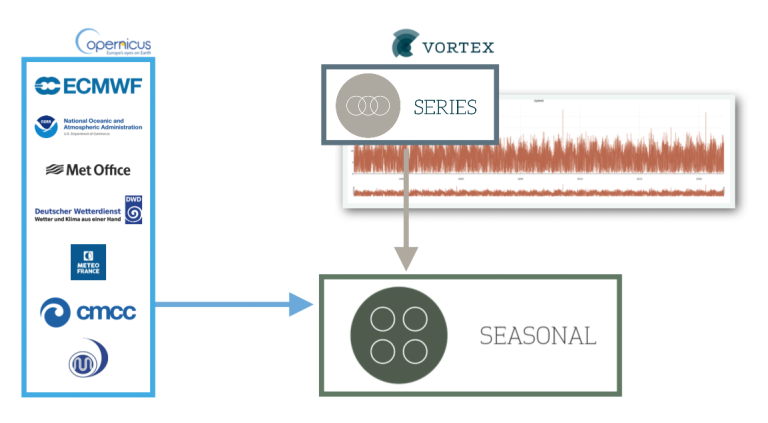
Close


Due to the chaotic behaviour of atmospheric systems, accurate seasonal forecasts are still an ongoing less than the trivial problem. Indeed today, one of the industry’s most common approaches to estimating these atmospheric magnitudes for subsequent months is nothing more than to make a ‘climatology’ guess: i.e., using the mean of that month’s values for the last 30 years. Yet, some weather forecasting centres are leveraging ensemble forecasts to make skilful predictions using numerical models which account for real physical behaviour.
Slightly different initial and boundary conditions may yield completely different results; to avoid this, an ensemble of numerical model forecasts can be used to calculate the probabilities of different weather outcomes in the months ahead (starting from the estimated similar initial ocean conditions, atmosphere and land). Due to small inaccuracies in a model or a different understanding of atmosphere dynamics, even different prediction systems can result in divergent predictions. In this regard, the ensemble output can be conceived as the forecasted probability distribution and more reliability can even be obtained by merging these different models in a multi-model.
Nevertheless, could these distributions be collapsed into a deterministic prediction? Sure, the wind and meteorological industry would leverage a skilful value much more than a range of them (e.g., adjusting budgets according to the prospects). However, there are also several subtleties which make this task somewhat more challenging.
For instance, simple techniques for collapsing ensembles (e.g., the ensemble mean) can be used, but they may yield poorer guesses even than climatology for some sites and months. This lack of skill can be circumvented by:
Yet, despite being an active field of academic research, ensemble postprocessing is not straightforward. Indeed, the lack of abundant monthly samples (and even significatively correlated predictors) can, in some cases, give rise to poor or even zero learning by these AI models and, consequently, a deterioration of the ensemble results.
Vortex’s Seasonal forecasting product takes advantage of these ensemble models (ECMWF, NCEP, Met Office, DWD, etc.) both in their raw and post-processed versions (using KNN, SVR, etc.) but also extended to 12 months employing known procedures of time-series analysis (using SARIMA, prophet, etc.).
Please download the document here for more detailed information about the technical details and validation results.